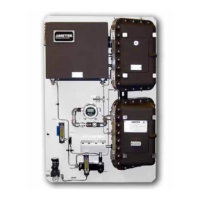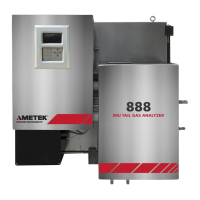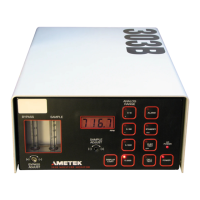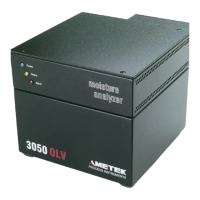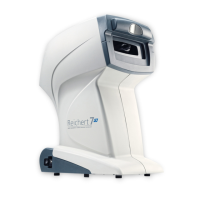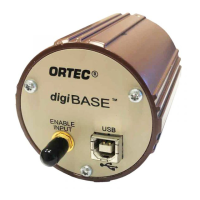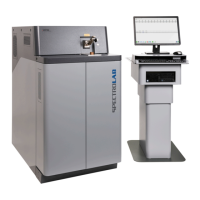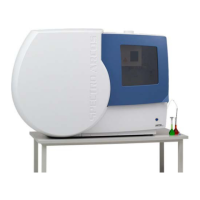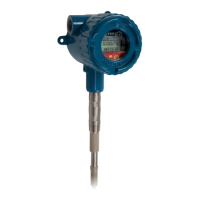Installation and Start-Up | 3-41
Sample Conditioning System Optimization
Perform this optimization procedure only after the Optical Bench and
Column temperatures have reached their normal operating tempera-
tures.
Differences in sample stream composition in various applications can
affect the operation of the chromatographic columns that are used to
remove interfering species. As the quantity of ethane and heavier hydro-
carbons in the sample stream increases, the elution time of all gas species
through the Columns tends to decrease.
This change in elution time affects the analyzer’s Column Switching
Interval and Hold Time parameters. These two parameters are factory-
set using stream composition data that was provided for the application.
View the Column Timing dialog box (Figure 3-23) and check to ensure
that the parameters are properly set for the application. Adjust them if
necessary.
Column Switch Time Optimization
The first UV-absorbing gas species that elute through the chromato-
graphic columns are hydrogen sulfide (H
2
S), carbonyl sulfide (COS), and
methyl mercaptan (MeSH). Because the Model 933S Analyzer can mea-
sure the concentrations of all three of these species, COS and MeSH do
not interfere with the H
2
S measurement. The concentration reading of
each species is automatically corrected for the presence of the other two
compounds. Ethyl mercaptan (EtSH) is the first UV-absorbing species to
elute that interferes with the concentration measurement of the first three
species.
During normal analyzer operation, while sample gas is flowing through
one absorbing column and concentration measurements are being per-
formed, the other column is being regenerated. Periodically, the columns
are switched before interfering species can elute from the absorbing
column. The Switching Interval is the time Column switch timing cycle.
When the Switching Interval is properly adjusted, the columns switch
before EtSH elutes from the absorbing column.
!
CAUTION

